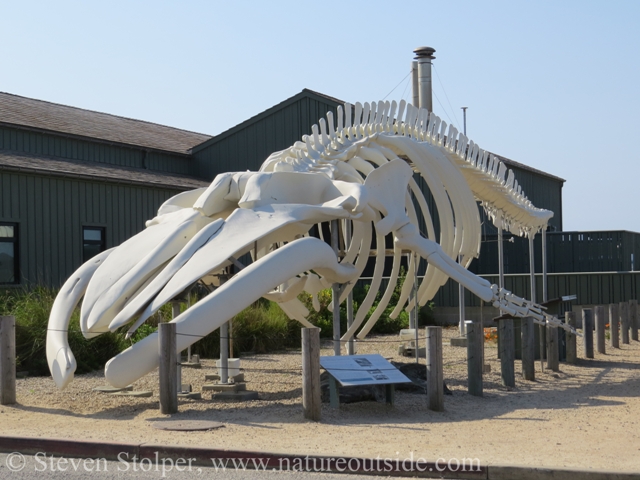
What does a bird see when it looks at you? I’m convinced it sees a scary dinosaur. And I have the numbers to back me up.
The Dinosaurs Go Birding
I reached this startling conclusion during my naturalist training. Our class went on a birding expedition to visit the ravines and grasslands that surround the Seymour Marine Discovery Center.
The center sits on a coastal terrace overlooking the breaking waves of the Pacific Ocean. The curiously flat grassland was actually an ancient ocean floor more than 10,000 years ago. Movements in the Earth’s crust uplifted the terrace to its present location 30 feet above the breaking surf.
The cloudless sunny day took my breath away. Out to sea, the “blows” from migrating California Gray Whales (Eschrichtius robustus) shimmered in the sunlight. Native grasses swayed gently in the sea breeze as insects buzzed among the coastal shrub.
The class entered the “restricted” area on the side of a steep ravine overlooking a marsh. Researchers fenced off this part of the terrace and constructed a covered observation post from which they can study avian behavior. We observed egrets, barn swallows, and many types of songbirds such as Bushtits. The Red-winged blackbirds kept us amused with their territorial displays and surreptitious mating behavior. It was like viewing some avian soap opera.
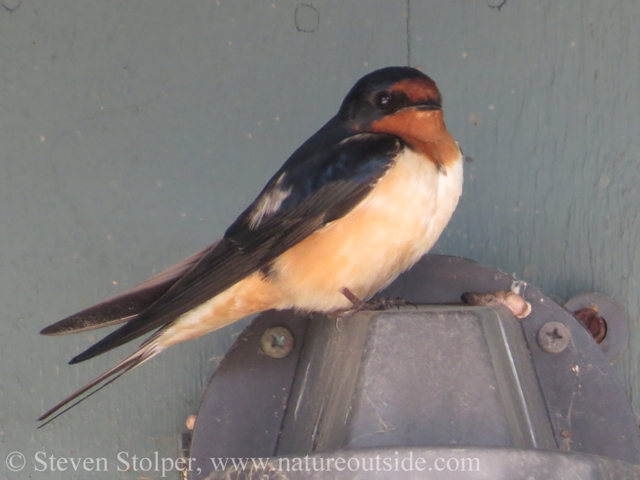
Barn Swallow (Hirundo rustica)
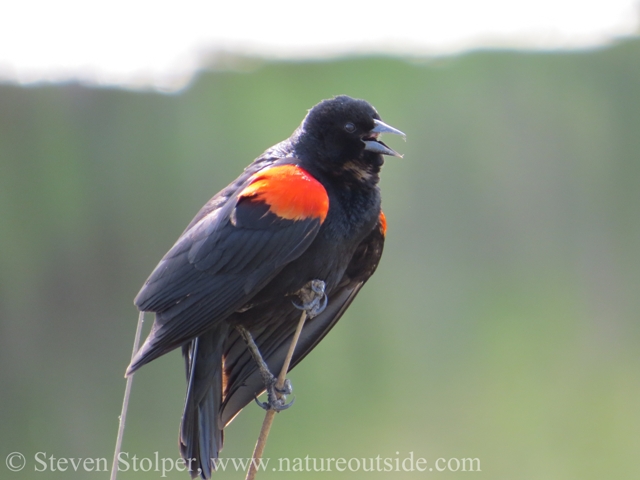
Red-winged Blackbird (Agelaius phoeniceus) issuing a territorial call
To our surprise, a house finch built a nest in the rafters of the observation post. We were able to examine one of its eggs (see picture below).
Ms. Blue
After our birding concluded, Todd Newberry, Professor Emeritus of ecology and evolutionary biology at University of California, Santa Cruz led us to the bones of “Ms. Blue.” She was a Blue whale (Balaenoptera musculus) that washed ashore in 1979. Ms. Blue is only one of four blue whale skeletons on display in North America, and may be the largest one displayed in the world.

Blue Whale skeleton (Balaenoptera musculus)
This whale is 87 feet long! It is hard to tell from my pictures, but here are two that help you get an idea of the size of this animal.
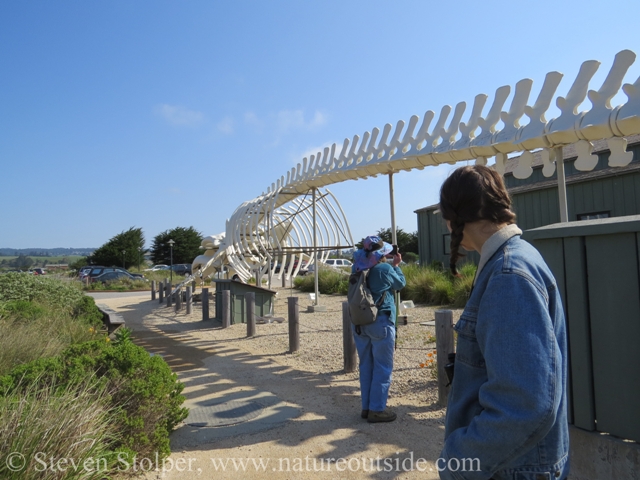
The true size of the creature. Some of the missing/damaged bones are replicas.
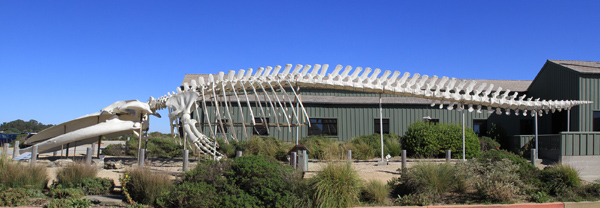
Blue whale skeleton shot with wide angle lens.
Photo courtesy of UCSC/Rachel Leonard.
Todd led us inside the belly of the beast. He explained that the Blue whale is the largest living animal on Earth. They can grow as long as 100 feet.
As he lectured to us about animal body size, he said something that blew my mind:
To birds, we look like dinosaurs. We are much larger compared to songbirds than dinosaurs compared to us.
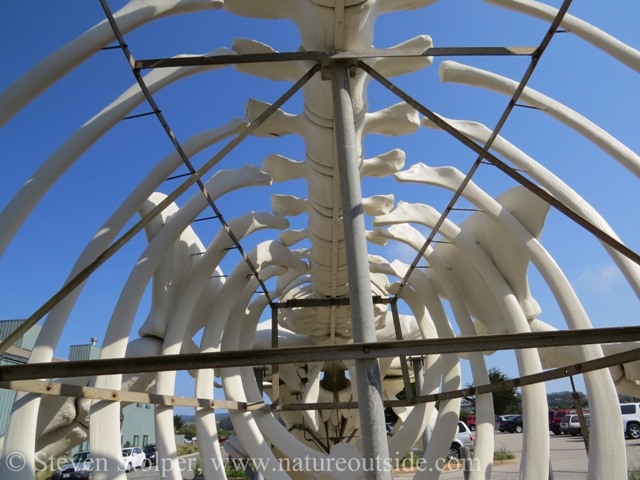
Imagine how a songbird sees us.
Humans, Whales, Songbirds, and the Size of the Universe
Todd is absolutely right! Check out these numbers:
| Animal | Body Length |
| Human | 5’6” (1.7 m) |
| African Elephant | 20’ (6 m) |
| Tyrannosaurus Rex | 43’ (13m) |
| Blue Whale | 100’ (30 m) |
| Bushtit | 2.8 in (7 cm) |
Humans are notoriously bad at judging time and distance/size. So here is a visual representation I put together:
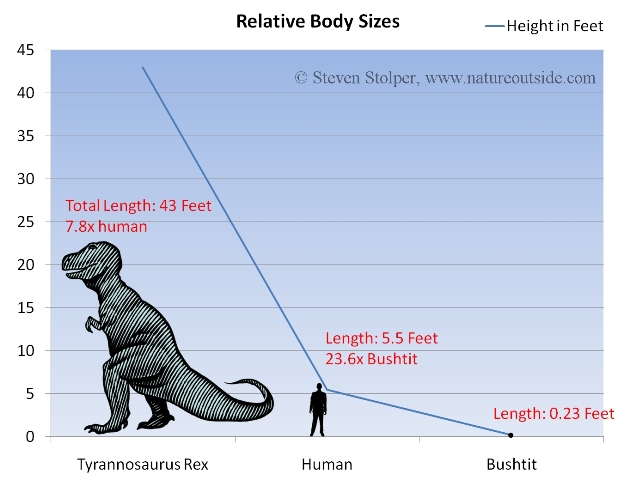
We are much larger compared to songbirds than dinosaurs compared to us.
These numbers are shocking. The Tyrannosaurus Rex is only 7.8 times larger than a human being. But we are more than 23 times larger than a songbird. To a songbird, we are humongous scary dinosaurs!
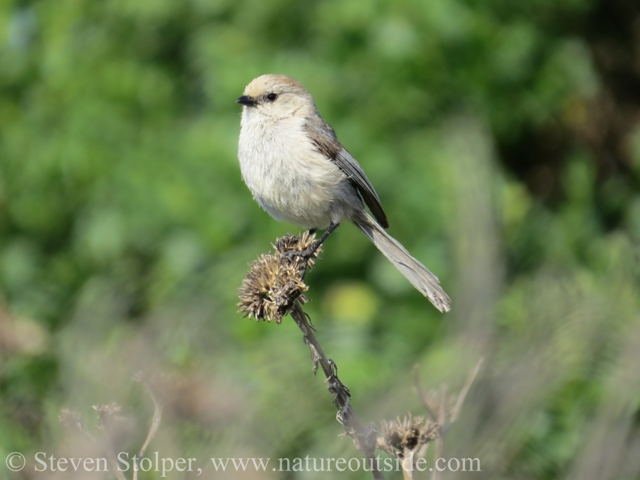
What does this Bushtit think when he sees you? (Psaltriparus minimus)

House Finch looking down on the huge monsters. (Haemorhous mexicanus)
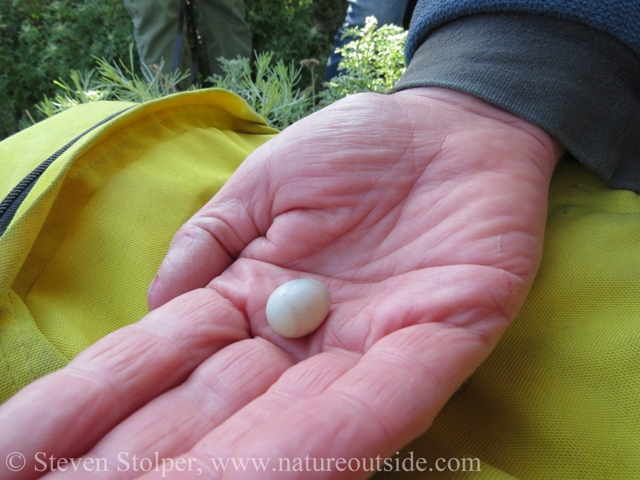
Substitute a human baby for this House Finch egg. What’s your reaction?
I always try to anticipate what animals are thinking when I’m observing or tracking them. How would you feel if you saw a Tyrannosaurus Rex walking down your street? Now imagine how songbirds must feel when we saunter by!
This illustrates how subjective our perceptions of size and distance are. We think of the Tyrannosaurus as big. But we fail to realize how stupendously large we are when compared to songbirds.
Below is a link to The Scale of The Universe 2. It is a terrific interactive display (with music) that allows you to explore the size of objects in our universe from a quantum string to the farthest supercluster of galaxies. Humans and some of our favorite plants and animals are also in the display. It is very well done. Check it out!
I hope this gets you thinking about size, distance, and how different sized animals might perceive us as we hike down the trail.
A Video About Ms. Blue
If you are interested in learning more about Ms. Blue, here is a video that tells her story. The narration is a little dry. But it is still an interesting story.
Now it’s your turn. What does this make you think about? Leave your thoughts in the comments section below.
More Birds on NatureOutside
What we can learn from a Harrier’s Butt
Mouse Released into Wild Snatched by Hawk Ruins Good Deed
If you liked this article, you may enjoy more in the Nature Section or the Parent’s Corner.



Dear Steve
Thanks for the memories of the CNP trip to the Seymour Center
Clive, it was certainly a fun trip!
– Steve